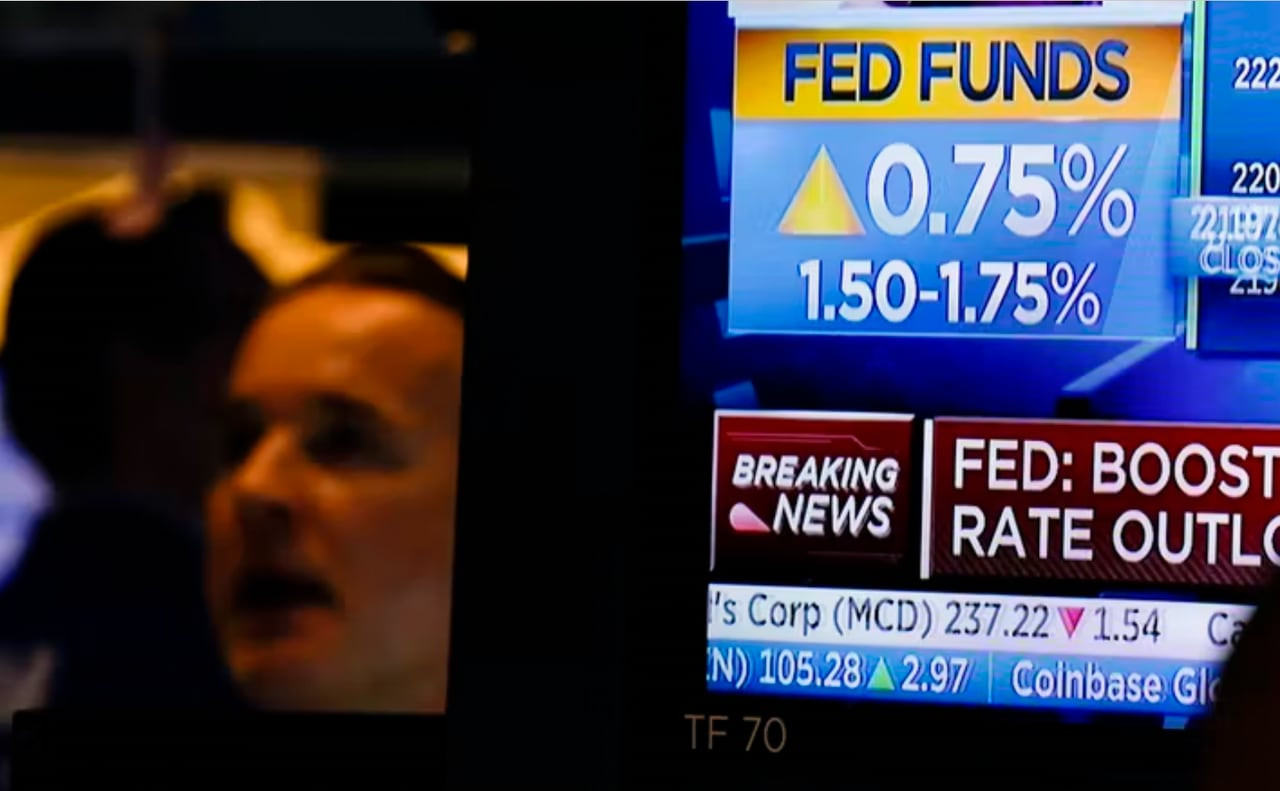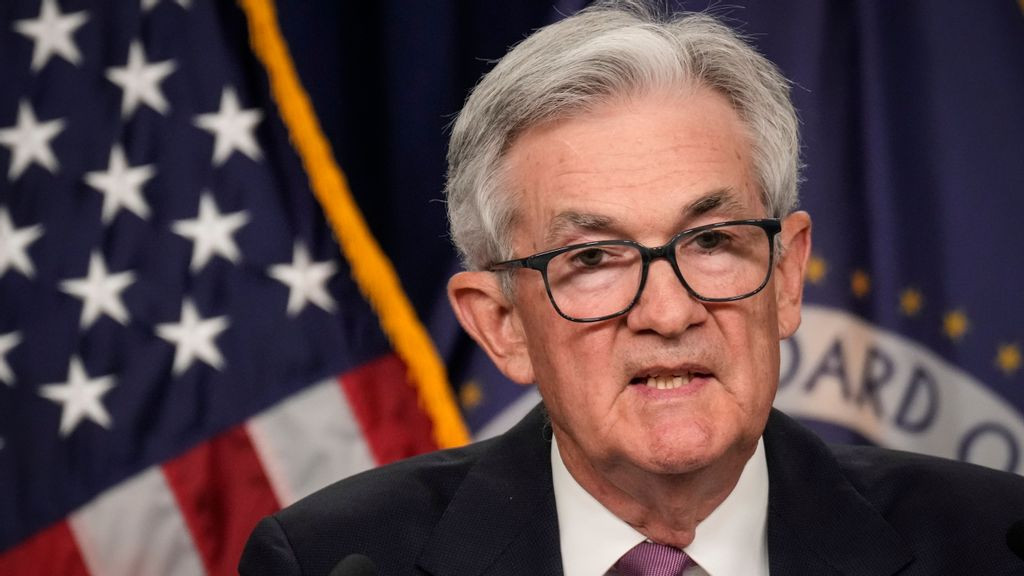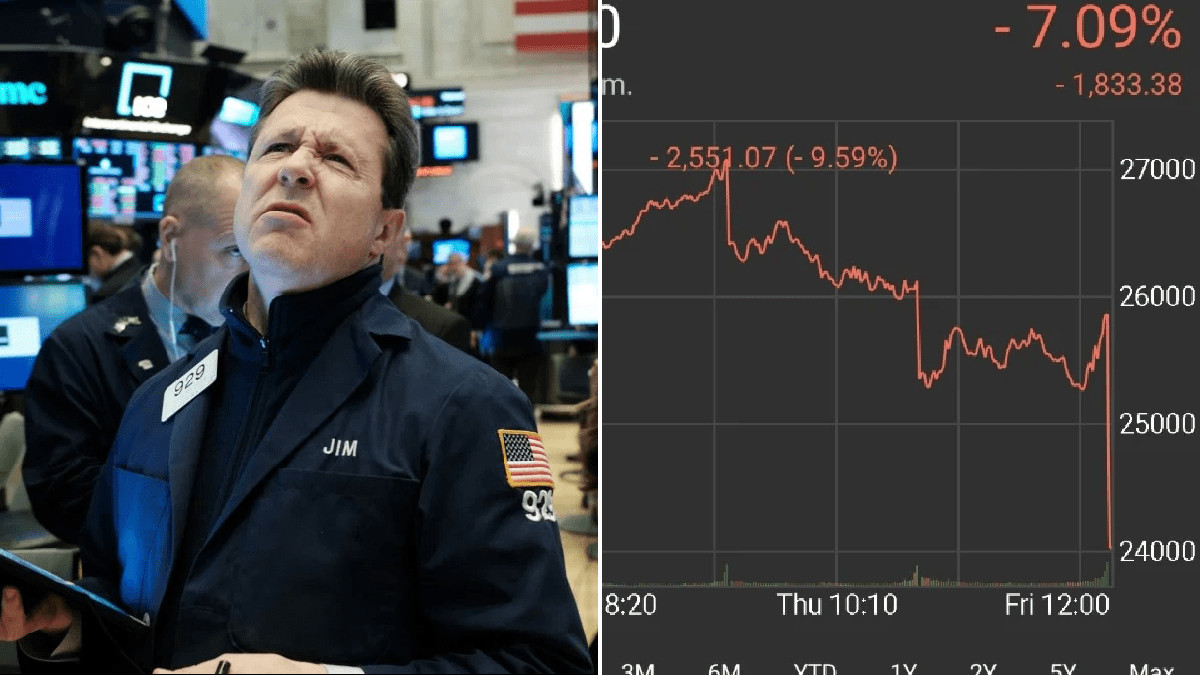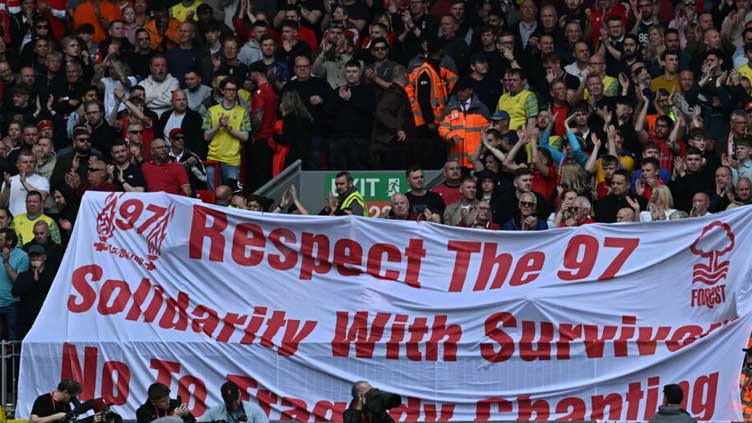For all the hype that goes into them, Federal Reserve meetings are usually pretty predictable affairs. Policymakers telegraph their intentions ahead of time, markets react, and everyone has at least a general idea of what's going to happen.
Not this time.
This week's gathering of the central bank's Federal Open Market Committee carries an uncommon air of mystery. While markets have made up their collective mind that the Fed is going to lower interest rates, there's a vigorous debate over how far policymakers will go.
Will it be the traditional quarter-percentage-point, or 25-basis-point, rate reduction, or will the Fed take an aggressive first step and go 50, or half a point?
Fed watchers are unsure, setting up the potential for an FOMC meeting that could be even more impactful than usual. The meeting wraps up Wednesday afternoon, with the release of the Fed's rate decision coming at 2 p.m. ET.
"I hope they cut 50 basis points, but I suspect they'll cut 25. My hope is 50, because I think rates are just too high," said Mark Zandi, chief economist at Moody's Analytics. "They have achieved their mandate for full employment and inflation back at target, and that's not consistent with a five and a half percent-ish funds rate target. So I think they need to normalize rates quickly and have a lot of room to do so."
Pricing in the derivatives market around what the Fed will do has been volatile.
Until late last week, traders had locked in on a 25-basis-point cut. Then on Friday, sentiment suddenly shifted, putting a half point on the table. As of Wednesday afternoon, fed funds futures traders were pricing in about a 63% chance of the bigger move, a comparatively low level of conviction against previous meetings. One basis point equals 0.01%.
Many on Wall Street continued to predict the Fed's first step would be a more cautious one.
"The experience of tightening, although it seemed to work, didn't work exactly how they thought it was going to, so easing should be viewed with just as much uncertainty," said Tom Simons, U.S. economist at Jefferies. "Thus, if you're uncertain, you shouldn't rush."
"They should move quickly here," Zandi said, expressing the more dovish view. "Otherwise they run the risk of something breaking."
The debate inside the FOMC meeting room should be interesting, and with an unusual division among officials who generally have voted in unison.
"My guess is they're split," former Dallas Fed President Robert Kaplan told CNBC on Tuesday. "There'll be some around the table who feel as I do, that they're a little bit late, and they'd like to get on their front foot and would prefer not to spend the fall chasing the economy. There'll be others that, from a risk management point of view, just want to be more careful."
Beyond the 25 vs. 50 debate, this will be an action-packed Fed meeting. Here's a breakdown of what's on tap:
The FOMC has been holding its benchmark fed funds rate in a range between 5.25%-5.5% since it last hiked in July 2023.
That's the highest it's been in 23 years and has held there despite the Fed's preferred inflation measure falling from 3.3% to 2.5% and the unemployment rate rising from 3.5% to 4.2% during that time.
In recent weeks, Chair Jerome Powell and his fellow policymakers have left no doubt that a cut is coming at this meeting. Deciding by how much will involve a calculus between fighting inflation while staying mindful that the labor market has slowed considerably in the past several months.
"For the Fed, it comes down to deciding which is a more significant risk — reigniting inflation pressures if they cut by 50 bps, or threatening recession if they cut by just 25 bps," Seema Shah, chief global strategist at Principal Asset Management, said in written commentary. "Having already been criticized for responding to the inflation crisis too slowly, the Fed will likely be wary of being reactive, rather than proactive, to the risk of recession."
Perhaps just as important as the rate cut will be the signals meeting participants send about where they expect rates to go from here.
That will happen via the "dot plot," a grid in which each official will signal how they see things unfolding over the next several years. The September plot will offer the first outlook for 2027.
In June, FOMC members penciled in just one rate cut through the end of the year. That almost surely will accelerate, with markets pricing in the equivalent of up to five, or 1.25 percentage points, worth of cuts (assuming 25 basis point moves) with only three meetings left.
In all, traders see the Fed hacking away at rates next year, taking off 2.5 percentage points from the current overnight borrowing rate before stopping, according to the CME Group's FedWatch gauge of futures contracts.
"That feels overly aggressive, unless you know the economy is going to start to weaken more significantly," Zandi said of the market's outlook. Moody's expects quarter-point cuts at each of the three remaining meetings this year, including this week's.
The dot plot is part of the FOMC's Summary of Economic Projections, which provides unofficial forecasts for unemployment, gross domestic product and inflation as well.
The biggest adjustment for the SEP likely will come with unemployment, which the committee almost certainly will ratchet up from the 4.0% end-year forecast in June. The jobless rate currently stands at 4.2%.
Core inflation, pegged in June at 2.8% for the full year, likely will be revised lower, as it last stood at 2.6% in July.
"Inflation appears on track to undershoot the FOMC's June projections, and the higher prints at the start of the year increasingly look more like residual seasonality than reacceleration. A key theme of the meeting will therefore be a shift in focus to labor market risks," Goldman Sachs economists said in a note.
In addition to adjustments to the dot plot and SEP, the committee's post-meeting statement will have to change to reflect the expected rate cut along with any additional forward guidance the committee will add.
Released at 2 p.m. ET, the statement and the SEP are the first things to which the market will react, followed by the Powell press conference at 2:30.
Goldman expects the FOMC "will likely revise its statement to sound more confident on inflation, describe the risks to inflation and employment as more balanced, and re-emphasize its commitment to maintaining maximum employment."
"I don't think that they're going to be particularly specific about any kind of forward guidance," said Simons, the Jefferies economist. "Forward guidance at this point in the cycle is of little use when the Fed doesn't actually know what they're going to do."
The Federal Reserve is poised to cut its key interest rate Wednesday, the first time since the onset of the Covid-19 pandemic that it has pushed it lower.
A reduction to the central bank’s federal funds rate serves as a benchmark for other borrowing costs throughout the economy. And while that move has been widely anticipated, investors have been unable to predict how large the cut will be.
On Tuesday, a survey by CNBC correspondent Steve Liesman showed a majority of respondents forecasting a 0.25% cut from the current 5.3% level, even as Wall Street traders said it was more likely that the central bank would issue a 0.5% cut.
The Fed tends to move in 0.25% increments — and until recently, there was general agreement that it was likely to lower the rate by that amount. But a series of data points showing worsening economic conditions has made some analysts believe a 0.5% cut is more likely — and perhaps even necessary.
While the unemployment rate, at 4.2%, remains relatively low by historical standards, it has climbed in four of the last five months — a pace that tends to occur before recessions. And while layoff activity remains subdued, hiring rates have ground to a halt, making life miserable for many people looking for a job.
In a recent research paper, economists at the Minneapolis Federal Reserve argued the U.S. labor market may be even worse off than it appears, noting that by one measure, every open position now has 1.5 job applicants — well below the pre-pandemic average.
“We do not seek or welcome further cooling in labor market conditions,” Fed Chair Jay Powell said in a speech last month.
Among those in favor of a 0.5% cut is Bill Dudley, the former president of the Federal Reserve Bank of New York and now a columnist for Bloomberg News.
In a blog post the same day, Preston Mui, senior economist at Employ America, a research group that advocates for full employment, said a large “up front” cut would signal that the Fed wants to get ahead of labor market deterioration.
If, instead, the Fed opts for a 0.25% cut even as the central bank indicates it will do another 0.25% cut at its next meeting in November, it will signal to markets that it does not have the appetite for being proactive, Mui said.
“If the Fed waits for layoffs to rise, they will probably be too late; fire prevention is more effective than fire fighting,” he wrote.
The counterargument: Markets could interpret a 0.5% cut as a sign the Fed thinks the economy is in worse shape than even the more alarming recent data suggests.
“A (0.5%) cut is usually done in emergencies,” like the Covid-19 pandemic, said Mark Zandi, chief economist at Moody’s financial group. “Some could interpret that as the economy going off the rails.”
Whatever the outcome, some consumers have already begun to benefit merely from the anticipation that the Fed will lower rates. Mortgage interest rates have hit their lowest level since February 2023, while auto loan rates are also falling.
A 0.5% cut would more directly affect rates tied to the fed funds rate, including credit cards, home equity lines of credit and small-business loans.
However, substantial relief in the short term from either a 0.25% or 0.5% cut is unlikely, according to Greg McBride, chief financial analyst at Bankrate.
“By itself, one rate cut isn’t a panacea for borrowers grappling with high financing costs and has a minimal impact on the overall household budget,” McBride wrote in a note released Monday. “What will be more significant is the cumulative effect of a series of interest rate cuts over time.”
Consumers should continue aggressively paying down high-cost credit card debt or home equity lines of credit carrying double-digit interest rates, he said.
“Interest rates won’t fall fast enough to bail you out of a tight situation,” McBride wrote.
Investors and economists will find out on Wednesday whether the Federal Reserve sees the greater risk to the employment or inflation side of its dual mandate.
The ever-shifting odds implied by futures markets have again drifted in favor of a half-point reduction after officials meet this week, from a low of around 20% last week. Pricing on Tuesday implied a greater-than 60% likelihood of a jumbo cut, back to where it was before the August jobs report on Sept. 6 calmed fears of an imminent recession.
The Federal Open Market Committee has held its federal-funds rate target range at 5.25% to 5.5% since July 2023. The central bank’s policymaking body begins a two-day meeting on Tuesday, with an interest-rate decision due on Wednesday at 2 p.m. Eastern time. Fed chair Jerome Powell will then hold a press conference beginning at 2:30 p.m.
There’s a strong case to be made for starting slow with a quarter-point cut. The August consumer price index, released on Sept. 11, showed continued progress toward the Fed’s 2% annual inflation target, but with stubborn price growth in housing costs. While the unemployment rate has climbed since last year, layoffs have been muted. Gross domestic product is on track for a 3% annualized growth rate in the third quarter, per the Atlanta Fed’s GDPNow model. And there’s no sign of a financial crisis or other economic calamity to force the Fed’s hand.
However, Fed officials are clearly thinking about what comes next, with a particular focus on the health of the U.S. labor market. Historically, rising unemployment has brought about lower consumer spending, which leads companies to cut back, boosting unemployment more. The central bank is eager to get ahead of such a negative spiral. And as inflation falls, the real fed-funds rate climbs, effectively making policy more restrictive than it has been at any other point this cycle.
“For the Fed, it comes down to deciding which is a more significant risk—reigniting inflation pressures if they cut by 50 [basis points, or hundredths of a percentage point,] or threatening recession if they cut by just 25 basis points,” wrote Seema Shah, chief global xtrategist at Principal Asset Management, on Monday. “With inflation seemingly contained, the Fed should be able to focus on the labor side of its dual mandate and front-load rate cuts to insure against recession.”
To be sure, a 0.25 percentage point or a 0.50 point cut alone in September won’t make a groundbreaking difference for the economy. But the signal the meeting sends about what comes next will be significant.
Expect some nuance. A half-point cut may be followed by tempering language from Powell at his press conference, warning markets not to expect a series of jumbo cuts at future meetings. A quarter-point reduction, meanwhile, could see Powell leave the door open to larger cuts at coming meetings—should the labor-market and inflation support it.
“Importantly, this rate cut is just the beginning,” wrote Greg McBride, Chief Financial Analyst at Bankrate, on Monday. “By itself, one rate cut isn’t a panacea for borrowers grappling with high financing costs and has a minimal impact on the overall household budget. What will be more significant is the cumulative effect of a series of interest rate cuts over time.”
There will be additional detail on Wednesday in Fed officials’ updated quarterly Summary of Economic Projections, which plots their latest forecasts for the U.S. economy, inflation, and interest rates. The last so-called dot plot in June included a median estimate for one quarter-point cut to the fed-funds rate by the end of 2024. Officials’ median forecast implied a percentage point of cuts each in 2025 and 2026.
Those dots are highly likely to shift in the direction of more rate cuts in 2024, given the faster-than-expected rise in the unemployment rate since the June projections, but might fall short of market pricing—which implies an aggressive series of rate cuts ahead. Futures pricing on Monday implied the greatest odds of 1.25 percentage points of easing this year, followed by another 1.25 percentage points in 2025.
“Looking beyond this meeting, the market continues to hold what we believe are unrealistic expectations for this easing cycle,” wrote Jim Smigiel, Chief Investment Officer at SEI, on Monday. “Barring a dramatic decline in economic activity, price levels, and sharp increase in unemployment, we believe the Fed will deliver substantially less cuts.”
The FOMC’s next two meetings will be in November and December.
Markets’ initial reaction to Wednesday’s meeting may be down to the 0.25 or 0.50 decision. But the lasting trend will be determined by the press conference and dot plot.
Mortgage rates have already come down. Above, a home for sale in Tucson, Ariz., on Monday. (Rebecca Noble/Bloomberg)
The Federal Reserve’s anticipated interest-rate cut is old news for mortgage rates, which have retreated from 2024 highs in anticipation. But that doesn’t mean home buyers should ignore the central bank’s announcement.
Mortgage rates, at a recent 6.2%, have dropped a percentage point since late spring on expectations for a September rate cut, according to Freddie Mac data released last week. What happens next is likely to depend on what the central bank has to say about the outlook
“Mortgage rates, having priced in an aggressive cutting cycle into 2025, are unlikely to move much until we hear from the Fed,” brokerage Redfin wrote in a release last week.
Recent mortgage rates are already pricing in Federal Reserve rate cuts of 0.5-0.75 percentage point through November’s meeting, says Keith Gumbinger, vice president at HSH.com, a mortgage information website. That is because mortgage rates move with the long-term bond market, which is influenced by future economic expectations, not the short-term fed-funds rate.
But any clues about the outlook for future rate cuts could still affect mortgage financing costs, for better or worse. If investors read the Federal Reserve’s post-meeting statement as a green light for a series of rate cuts, mortgage rates could move to new 2024 lows. But prospective buyers could see financing costs rise if markets are disappointed by the size of Wednesday’s reduction or signs of a slower-than-expected path of rate cuts.
“Whether [mortgage] rates move up or down after the meeting strongly depends on what the Fed says about its future intentions,” says Gumbinger.
The same could be true for homebuilders’ stocks, which rallied to new highs in the run-up to September’s meeting. Lower mortgage rates have made buying homes more affordable since early July, Bank of America Securities analysts Rafe Jadrosich and Shaun Calnan wrote in a Tuesday note. But it was largely expectations for what could come next that have sent the shares higher.
Builders’ stocks have risen “as investors look through near-term weakness to a 2025 recovery fueled by lower mortgage rates and pent-up demand,“ the analysts noted. “Stock performance following the first cut is more mixed although usually positive for homebuilders.”
No matter the reaction to the Fed decision, it is likely that mortgage rates end 2024 modestly lower. But don’t expect a dramatic drop.
“BofA mortgage-backed securities team forecasts mortgage rates of 5.75%-6% by year end, which implies the bulk of the decline has already occurred,” the BofA analysts wrote.
A closely watched Federal Reserve facility, which gauges the level of excess cash in the financial system, fell to its lowest level in more than three years this week.


















